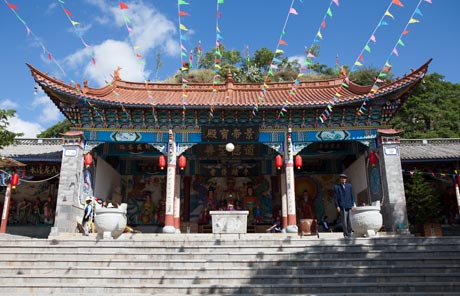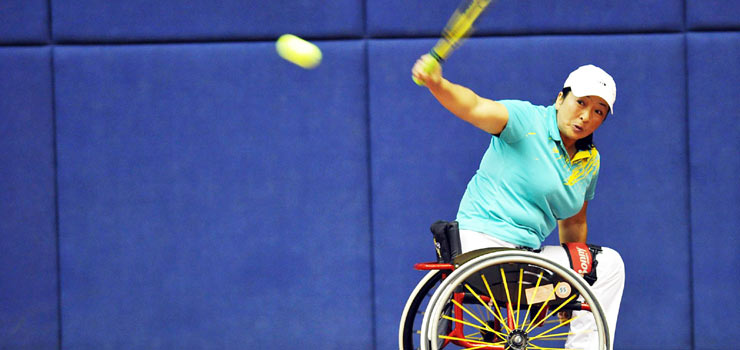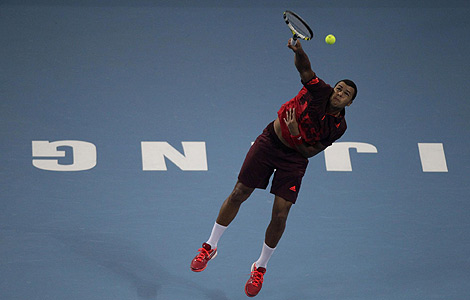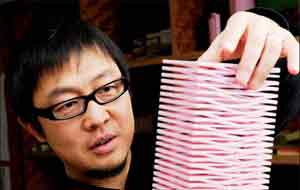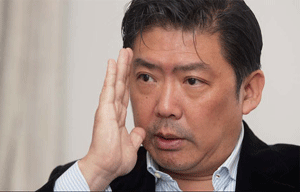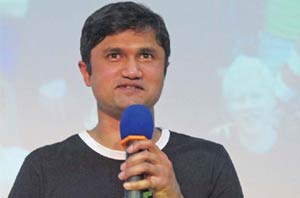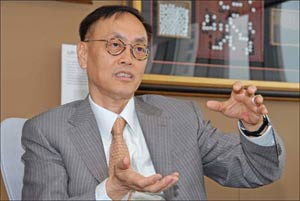Bad boy architects & China's new face
Updated: 2011-10-17 11:06
By Liu Yujie (China Daily)
|
|||||||||
They are an unmistakable part of the urban cityscapes. But is China a playground for international architects or an abused testing ground for bad design? Liu Yujie examines the landscape and finds out if these new buildings are towering landmarks or lasting eyesores.
In Beijing, the National Stadium, otherwise known as the Bird's Nest, was designed by Herzog & de Muron from Switzerland. The National Center for the Performing Arts was by French architect Paul Andreu and the landmark China Central Television Headquarters in the heart of the central business district is the work of Rem Koolhaas from the Netherlands, while the Beijing Capital International Airport was designed by Norman Foster from the United Kingdom.
|
The high-rise Jin Mao Tower in Shanghai draws inspiration from Suzhou architecture. Provided to China Daily |
Since the beginning of the millennium, the works of international architects have sprung up like mushrooms in China's cities. These urban gurus not only brought their cutting-edge designs here, but also brought the whole world's attention to what can be built in China. Constant global media coverage has portrayed China as an open stage for ambitious, innovative urban design, a reputation which initially pleased those who were commissioning the building, but later raised doubts and reflections of whether the country was being misused as a testing ground for maverick projects.
It is true that today's China has both money and mind for probably the largest urban construction movement in human history, a major motivation for first-class architects overseas.
Zaha Hadid, the world's foremost female architect, drives it home when she compares China to "a perfect blank canvas" for architects with unlimited creation.
Nevertheless, Peng Peikeng, a senior commentator at Tsinghua University, is angered by the fact that some well-known foreign architects have obviously taken advantage of China's eagerness to build dazzling modern cityscapes. He feels there has been too many architectural experiments here in recent years.
"The Pritzker prize, the Nobel prize in architecture, is awarded to honor those who build works demonstrating 'durability, utility, and beauty'. This is widely accepted as the yardsticks for good building design. Sadly, many of these foreign architects' works in China display none of these."
Peng supports his criticism by pointing out that many of these designs would never be accepted by the architects' home countries because they would have failed city planning concerns, stricter sustainable development demands and tighter budgets.
That is why they come to China, Peng says, a country that is currently open to almost anyone who can contribute "landmark buildings" in whatever forms.
The architects are not solely to blame. More often than not, they are expected to deliver constructions whose only condition is to stand out from the crowd.
A recent plan for a new venue of China's National Museum of Fine Arts, "the world's largest art museum", is the latest target for debate. It will be located near the National Stadium in Beijing's Olympic Park and there are already worries that it may turn out to be another pair of "giant underpants", the nickname for the asymmetrical twin legs of the CCTV Tower in heart of the Chaoyang district.
The desire for the new and eye-catching may be the result of historical baggage.
"China's architectural style was greatly influenced by the Soviet Union for a long time, when the pursuit for charismatic individual design was curbed. It has now led to an outburst of fancy for the avant-garde, chic and novel, a desire made possible by the wealth accumulated during more than 20 years of economic reforms and opening up," says Wu Liangyong, a senior architect and a member of the Chinese Academy of Sciences and Chinese Academy of Engineering.
The desire to be different can lead to some odd experiments in the neighborhood. For instance, Jingya Restaurant, a 12-storey building a few blocks from the Forbidden City has a facade that is supposed to reflect the "awesome power of the ocean".
Raimund Abraham, the late American architect behind the design, once told Chinese media that the owner told him to build the most "impressive" landmark in the capital.
He did it. But did it please everyone?
At least 9 out of 10 residents we asked recounted their initial horror of the facade of the restaurant, and most still found it difficult to like it.
"It just looks so weird, so out of place with the surroundings. I can't even say it is beautiful or ugly," says Zhang Jie, a lady in her 40s who lives across the road.
Perhaps it is time to draw back and look at the landscape more objectively. What kind of architectural achievements are we looking at that best suit China's rapid urbanization?
Many domestic architects finger two landmark buildings as antithesis of the case in point: One is the Jin Mao Tower in Shanghai and the other is the CCTV Tower in Beijing's CBD. These two landmarks represent the best and worst in blending East with West, ancient and modern, and form and function.
Designed by SOM architects from Chicago, the Jin Mao skyscraper imitates an elegant Suzhou ancient tower and is highly functional at the same time, a fact lauded by experts and appreciated by Shanghai residents.
In contrast, design critics say the new CCTV building by Dutch master Rem Koolhaas has "humiliated the Chinese" by its irreverent resemblance to a pair of boxer shorts, and its exorbitant price tag of five billion yuan ($783.80 million).
"China is not so rich that we do not need to count the cost. We need real and practical solutions," says Wu. "I hope none of my students will ever propose such irresponsible designs for a developing country."
Some Chinese architects have heeded the clarion call to rediscover traditional architecture influences.
Liu Xiaodu of Urbanus Architects created an urban tulou (earth fortress) in Guangzhou, modeled after the circular fortified structures built by the Hakka people in Yongding, in neighboring Fujian province.
His work successfully addressed how the old vernacular can provide inspiration for modern low income housing that has a strong communal focus, and improves the lives of migrants in urban enclaves in China today.
Wu Xuefu, a professor of design at the Communications University of China, has been traveling with his students all over the country, taking pictures of traditional Chinese residences, and researching and defining Chinese-style aesthetics.
"We believe it is time for China to stop worshipping foreign things and to 'export' the best we have to the world. But first, we need to know ourselves better."
But in the midst of nationalistic indignation, there is also the other side of the coin. Foreign architects bring maturity of experience and technology. The so-called "foreign invasion" also instigates local talents to take a good look at what they can offer.
Wang Shu, professor of architecture at the China Central Academy of Fine Arts (CAFA), succeeded in wresting the design of the Ningbo Museum from GMP Architects from Germany years ago.
"In the past, Chinese architects did not have the confidence to take up big projects like museums and performing centers. By cooperating with foreign partners, we have taken a big step forward. It is good to have competition so we can grow and look for our own distinctive characteristics," Wang says.
While building design as a profession has existed for more than 500 years in the West, it has a relatively short history of a mere 30 years in China.
In Asia, we can perhaps look toward Japan, where western-style architecture arrived during the Meiji Restoration of the late 1860s and changed the physical landscape. Although the Meiji rulers began to use Western architects, Japan was careful to keep its culture and strived to preserve that in its modern construction. That paved the way for generations of exceptional Japanese architects such as Kenzo Tange, Kisho Kurukawa, Tadao Ando, Toyo Itob and Kazuyo Sejima.
Wang is optimistic Chinese architects, too, will take their place in international building design, although there is a lot of ground to till. First, there is the age-old question of the education system.
Wang says it is good to see architectural faculties attract more students in recent years, "but increasing the number is not enough, we need to set up our own aesthetic system and educational methods".
In his classes at the CAFA, Wang emphasizes the importance of Chinese calligraphy as well as Western drawing techniques. His explanation is that "through calligraphy we grasp the Chinese way of perceiving and manipulating space and form".
He has also called for the government to set up a system of fair competition to allow domestic and foreign design firms equal opportunities.
"Renowned architectural studios from abroad are favored. China cannot cultivate its own talents if such preferences are not abandoned." And finally, Wang says, the media should stop highlighting odd-looking buildings and give them publicity and attention.
You can contact the writer at liuyujie@chinadaily.com.cn.


